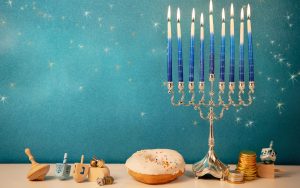Name: Tzav
Reading: Leviticus 6:1 – 8:36
Haftarah: Malachi 3:4-24
Shabbat Bonus – Shabbat Hagadol!
Parsha Summary – Tzav
God Instructs Moses Regarding the Sacrifices
God tells Moses to command Aaron and his sons regarding the burnt offering. It must be burnt through the night into the morning, keeping the altar fire lit. The priests will move the ashes from the altar and a fire will always remain lit on it.
Meal Offering
A meal offering is made from a handful of fine flour, oil, and frankincense. Part of it should be burnt as a sweet-smelling offering for God; Aaron and his sons will eat what’s left. It will not be leavened.
Priest’s Offering
Aaron and his sons will offer fine flour as a meal offering in the morning and evening. It shall be made with oil and fully offered to God; no-one can eat of it.
Sin Offering
Kill a sin offering in the same place as the burnt offering. The priest that offers it can eat from it, and one who touches the flesh of it is holy. The vessel it is made in must be broken or scoured. The priests may eat it unless its blood is used for consecration, and then it must be burned.
Guilt Offering
The guilt offering should be killed in the same place as the burnt offering. The blood shall be spread around the altar and the fat – from the tail, and the kidneys, and the liver – shall be burned as smoke. The priests may eat it, and claim the skin of a burnt offering he presides over, and every meal offering.
Peace Offering
For peace and thanksgiving, offer unleavened loaves and cakes and flour soaked with oil along with an animal; the animal must be eaten on the same day. If the offering is made for a vow, then what’s left can be eaten the next day too, but any remainders on the third day must be burned with fire.
God Commands the People
Do not eat the fat of ox, sheep, or goats. It can be used for other purposes, but cannot be eaten.
Do not eat the blood of any animal.
The people can bring their own peace offerings, and part of it may be used as a wave offering.
These offerings are to consecrate the people and will be performed by the priests.
Moses Initiates the Priests
Aaron and his sons come to the Tent of Meeting with sacrifices prepared. They wash and dress in the priestly garments. Moses anoints the altar and all the Sanctuary’s vessels with oil, then pours oil on Aaron’s head to anoint him as the High Priest. A bull is sacrificed as a sin offering; Moses uses the blood to purify the altar and burns the fat on it. A ram is sacrificed as a burnt offering and Moses uses the blood to consecrate the priests. The priests are ensconced within the Sanctuary for a week to complete their consecration.












